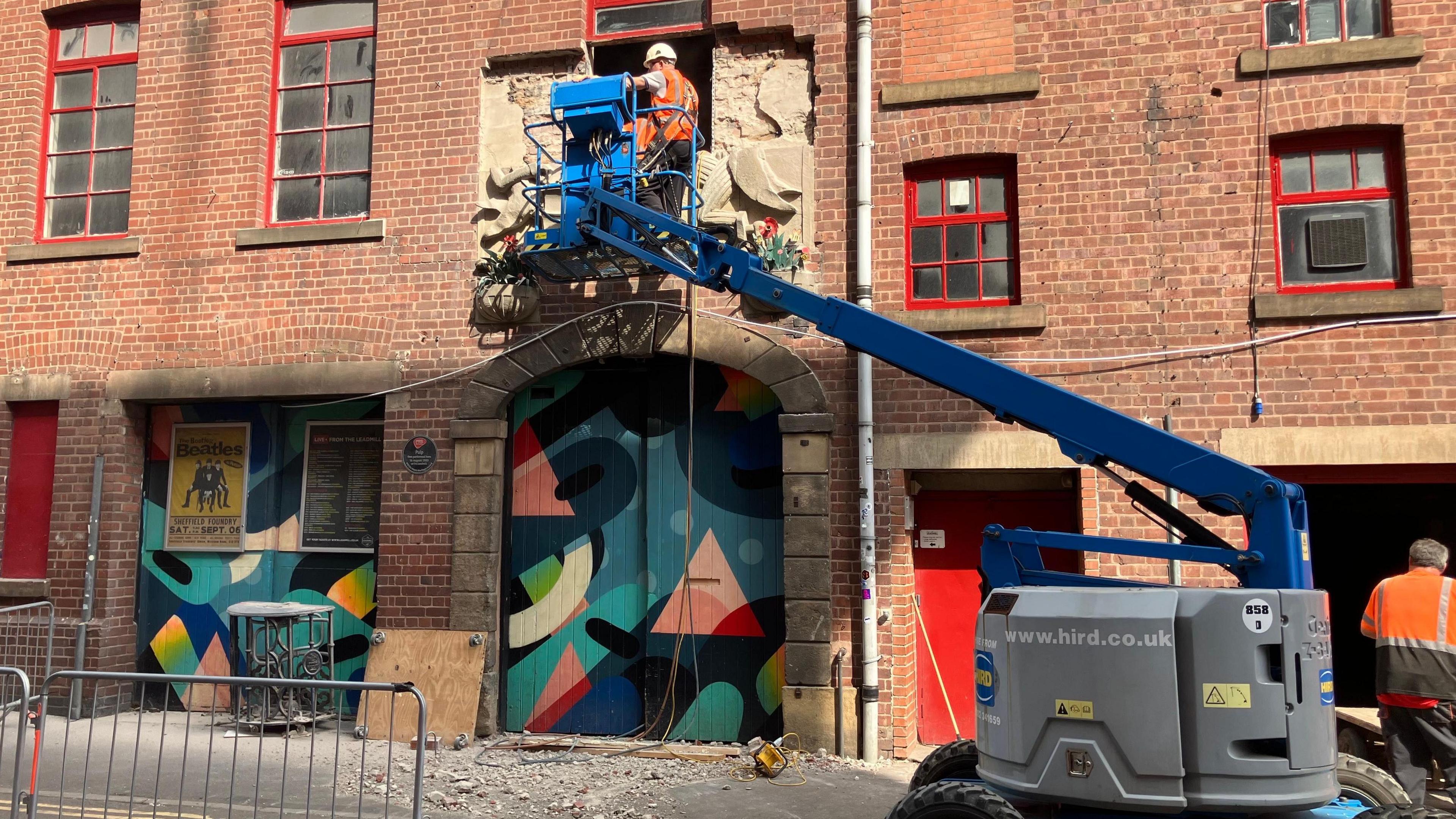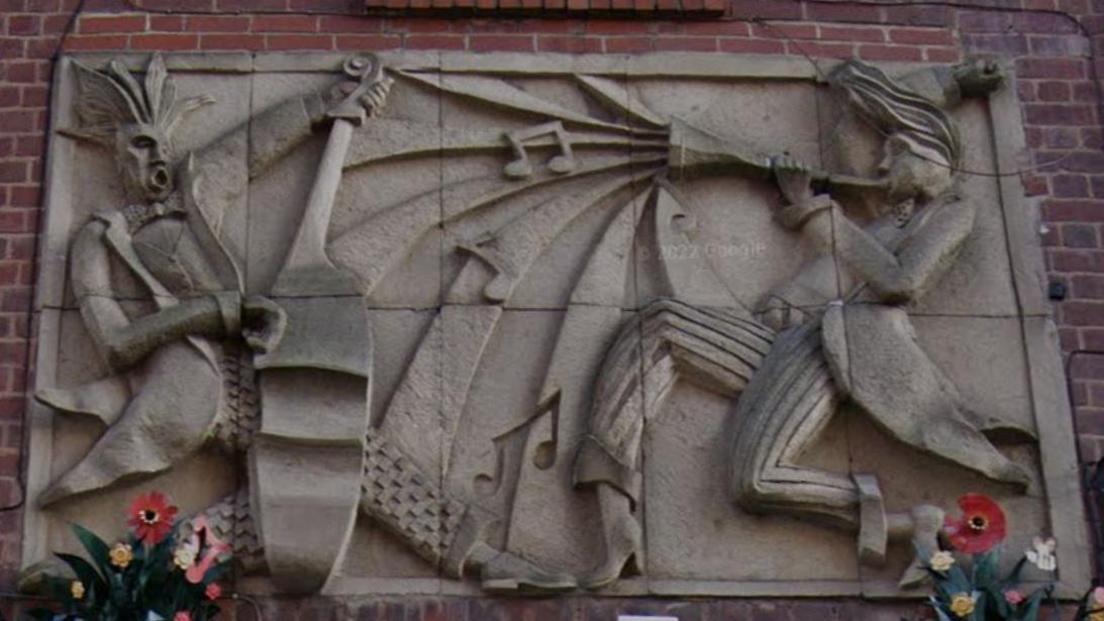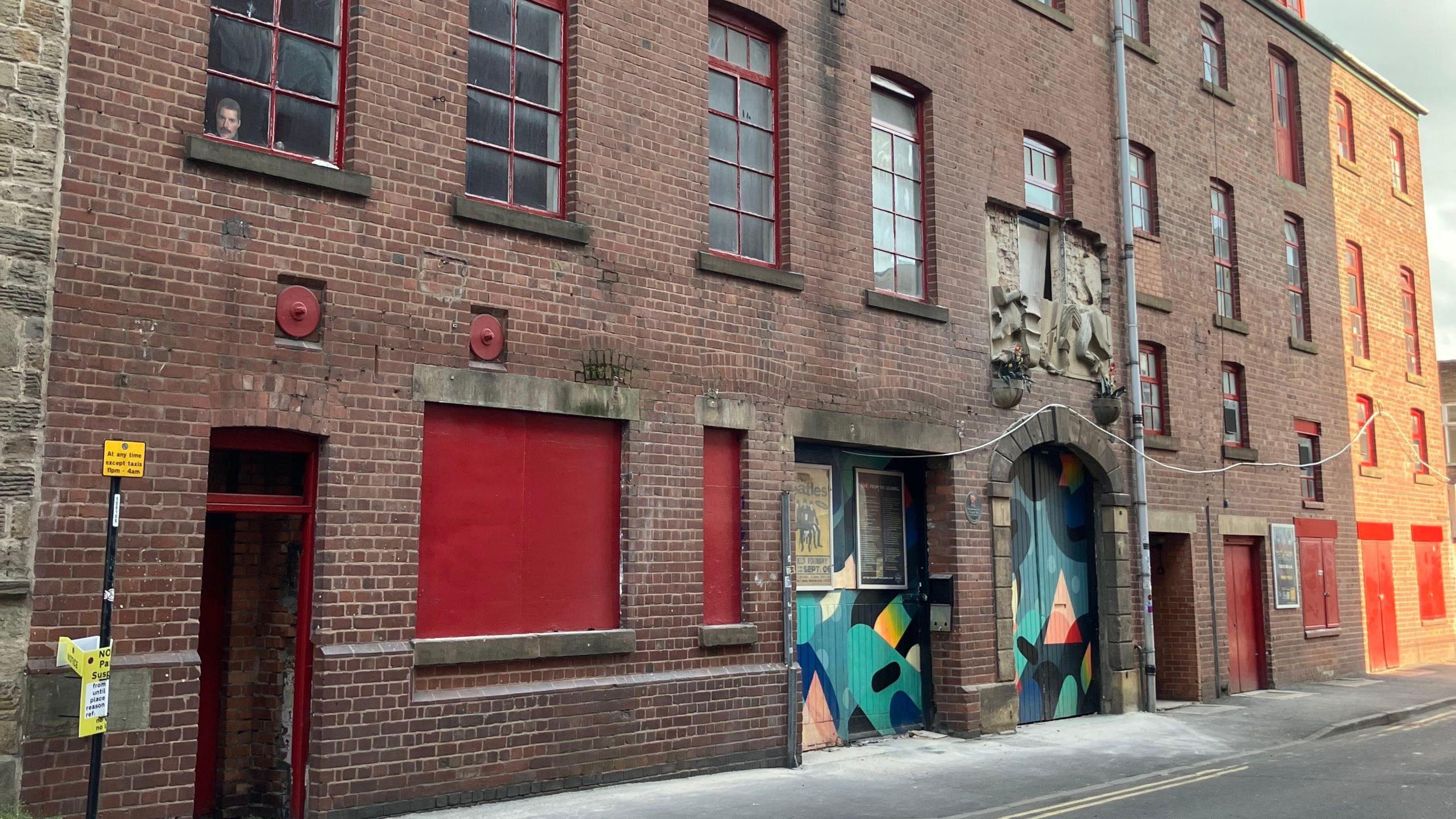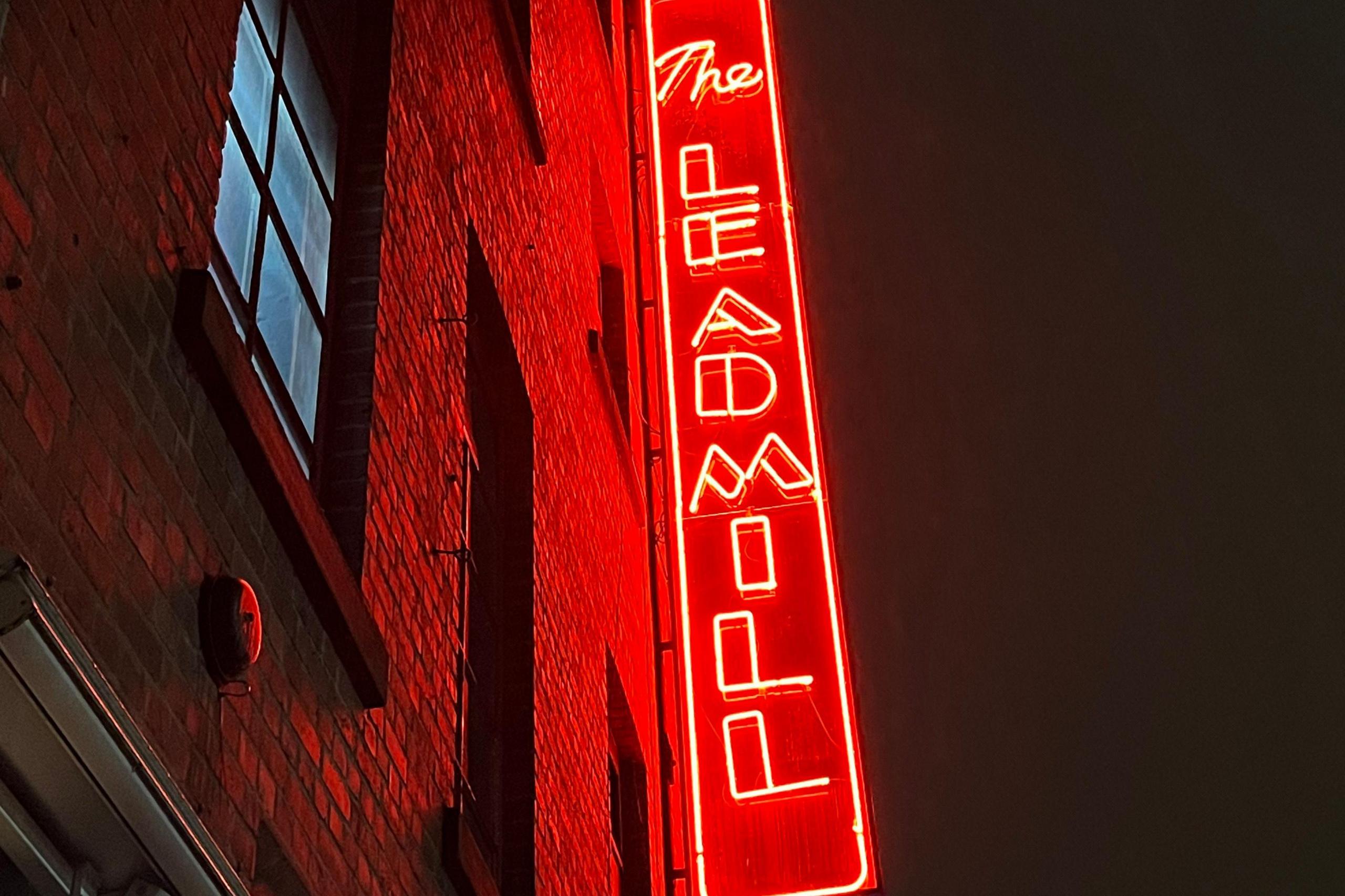Venue halts artwork removal amid planning dispute

The artwork has been in place above the entrance to the venue since 1989
- Published
The operators of the Leadmill have agreed to halt the removal of a piece of artwork above the Sheffield venue's entrance doors after it emerged they did not have planning permission.
Workers were seen removing part of a bas-relief sculpture which has been in place since 1989 from the building on Thursday - a move the artist said "looks like vandalism".
However, the city council confirmed planning permission for its removal had not been obtained and said the artwork, which depicts two musicians playing instruments, would have to be reinstated.
A Leadmill spokesperson said the artwork was their property and it was being removed to be stored and "reused by us when we find somewhere suitable".
Earlier this year, the operators of the historic event space were told they must leave the venue on Leadmill Road after losing an eviction battle against their landlord, Electric Group.
"We don't believe we are in breach and in any event our property is protected under Article 1 of the first protocol enshrined in the Human Rights Act 1998," the Leadmill spokesperson added.
"All we are doing is taking our belongings when we leave, which we are entitled to do."

Artist Michael Disley said he considered the piece to be public art which he feared would have been damaged during its removal
However, Michael Disley, who created the artwork with Martin Winter, said he considered it to be a piece of public art and said its removal "looks like vandalism".
Mr Disley expressed his concern about the process of removing the piece, which comprises 10 slabs of stone, arranged five across and two high.
"I can't see them taking that down and not damaging it," he said.
"It was a very difficult fix in the first place - it took days and days to put in."
The pavement underneath the artwork had not been fenced off when the BBC visited the venue on Thursday evening.

Five concrete slabs that make up the artwork have been removed
A council spokesperson said "temporary measures" had since been agreed with the operators "to ensure public safety following the removal of some of the stonework".
"This is our top priority, ensuring the site is safe, secure and poses no risk to the public," they added.
"Going forward, we will be assessing what enforcement powers are available to us and this process will begin next week."
The spokesperson said their request for the artwork's removal to be halted had also been agreed to.
Mr Disley said he and Mr Winter had answered an advert in The Guardian for a sculpture commission in 1987 and were chosen to create the piece after an interview with Adrian Vinken, who formerly ran the venue.
"It's part of the fabric of the building," he said.
"Ownership passes on. It's not as though it's got nothing to do with what's going on inside. I would love to see it reinstated."
Electric Group, who own the building, said they planned to continue running it as a concert and nightclub venue.
A refurbishment is planned once they take control of the site, which appears to have been gutted, on 15 August.
February 2026 has been given as a reopening date under a new name, Electric Sheffield.
An Electric Group spokesperson said they were "really disappointed to see the removal of a much-loved Sheffield artwork".
"It's been part of the city's fabric for years and has meant a lot to visitors and locals alike."
The venue's neon Leadmill sign has now been removed, although a planning application to install two new neon signs with the lettering 'Electric' and 'Electric Sheffield' has been submitted to Sheffield City Council.
The council's spokesperson said planning permission was not required for the removal of the neon sign.
Related topics
- Published20 February
